Dear Readers, The superfood carob health has numerous uses and is also very healthy. In this article, you will learn about the advantages, applications, and risks of carob.
Carob not only has a long history, it also has names with interesting backgrounds. In addition, the carob tree is a real super plant.
Things to know about carob
Carob is a legume and is found almost everywhere in the world.
There are also a number of interesting facts about this superfood.
Origin and history
The carob probably comes from Arabia.
It is said to have been cultivated for the first time in Egypt two thousand years before Christ.
At least records of the ancient pharaohs document the use of the wood from the carob tree as a building material.
The Romans finally brought the fruit to Europe in the last century, where it spread further. In the 17th century, seafarers also brought it to America, Asia, and Australia.
Mainly, however, the wood of the tree was probably used for building at that time, as well as the fruit as animal feed. Since the 19th and 20th centuries, the flour of the fruit has been processed and used for food and as a substitute for coffee.
The carob tree
In Austria, the carob tree is also called the fenugreek tree.
Other names for this plant are carob tree or carob tree.
It is very drought-resistant and can grow well in high heat, for which 350 to 550 millimeters of rainfall per year are sufficient.
The tree is about 10 to 20 meters high.
In general, this tree is quite undemanding. It can grow on almost any soil, even if it has high salinity.
So it can also grow excellently on coasts or in marginal locations without irrigation. The carob tree is only sensitive to frost. So it is hard or not at all to be found at high altitudes.
Harvest of carob
The fruits of the carob tree are about 20 to 30 centimeters long and green at first.
As they mature, they acquire their classic chocolate brown color.
They are harvested by the harvest workers hitting the branches with sticks. This is how the fruit falls from the tree, where it is picked up.
Carob is harvested unripe, otherwise the fruit will not fall off until they are overripe.
On average, about 75 kilograms can be harvested per tree, and there are even trees that bear up to 250 kilograms of fruit. Since the harvest is quite complex, it also accounts for almost a third of the production costs.
The taste
The taste of carob is quite sweet and resembles that of caramel, some also compare it to liquorice.
The ground pulp is also often used as a chocolate or cocoa substitute due to its sweet taste. You can eat the fruit whole or as one of the many products.
Benefits and health effects of carob
Carob has been considered extremely healthy for many years, no matter in which form it is used.
It can be a good substitute for unhealthier sweets, but it also has some important nutrients.
In addition, it is very durable.
Below we explain the benefits that carob can have for you and your health.
Nutritious
Carob contains many nutrients that we can use to do our bodies good.
In addition, it is very low in cholesterol and fats.
Among the nutrients, for example, there is also a large proportion of calcium.
Our body needs this to ensure healthy bones and teeth.
Carob as a chocolate substitute
In this country, carob is probably best known for being a healthy substitute for chocolate.
After all, it contains significantly less fat (chocolate: 34 grams, carob: 0.7 grams) and calories (chocolate: around 530 kcal, carob 222 kcal).
It also contains proteins and fiber, which in turn are healthy and keep you full for longer.
Since the taste of carob is quite similar to that of chocolate, the superfood is often and happily taken as a healthy alternative to chocolate sins.
Especially for children, who are known to love sweets, carob can be a small, healthy substitute.
When you hold a carob in your hand for the first time, the slightly rancid smell may irritate you at first.
But don’t let that put you off. The odor comes from the high levels of a substance called isobutyric acid.
You can still eat the carob with a clear conscience. The taste is very sweet and delicious despite the strange smell.
Ecologically sustainable
In contrast to many other foods and especially chocolate, carob is a much more sustainable alternative.
Since the locust tree is such an undemanding plant, it is easy to grow it organically.
In addition, it uses extremely little water.
For comparison: a normal 100-gram bar of chocolate uses 2,700 liters of water in production.
Other products such as cocoa, on the other hand, often need to be treated with pesticides and other chemicals. This not only damages the environment but also the health of the workers on the plantations.
The carob health tree, on the other hand, even improves the condition of the soil.
However, when it comes to carob, you should keep in mind that it is often flown in from far away countries, just like chocolate and cocoa.
If you want to protect the climate, it is best to make sure that your carob comes from European countries such as Italy or Croatia.
Cancer preventive
Carob contains many antioxidants. These are substances that protect us from so-called free radicals.
These are formed by the body, but also by toxic environmental influences such as cigarettes or strong sunlight.
Free radicals attack our cells. Antioxidants counteract them.
This can help prevent certain types of cancer, especially cervical cancer. But the immune system is also strengthened and inflammation is counteracted.
Help with indigestion
If you have problems with your stomach or intestines, carob is an excellent healing agent.
Mainly because of its high fiber content.
For example, it can help with heartburn, constipation, inflammation, flatulence, or diarrhea.
Carob is also ideal for people with gluten or lactose intolerance.
However, it can also have a mild laxative effect if you consume too much of it. So watch the amount you eat.
Lose weight
If you want to lose weight, carob health is an ideal diet product for you.
It boosts fat burning, lowers your blood lipid levels in the short term, and contains no cholesterol. In addition, it is very low in fat.
Another benefit of carob is that it prevents the overproduction of ghrelin.
This is a hormone produced by the body that stimulates the appetite.
For example, if you replace your daily portion of chocolate or cocoa with carob, you have already saved a few calories and at the same time prevent cravings.
Where to buy carob
Carob health is not that difficult to get here.
It may not be readily available in small supermarkets.
Nevertheless, it should be found in a large, well-stocked supermarket.
Above all, you can find syrup and other products made from fruit very well in organic markets and health food stores.
If you’re having trouble finding a carob, you can also look for it in Turkish or Arabic grocery stores.
You can find it there more often than in our traditional supermarkets.
Applications of carob
Carob is made into a variety of products, although we don’t have all of them here.
Even for the animal world, the fruit is a miracle cure.
Carob as a food
In the growing countries, it is primarily the poor sections of the population who benefit from the nutrient-rich fruit.
We know carob haelth mainly in powdered form, as so-called carob powder. You will learn all about this in the next chapter.
Juice and syrup
In some countries, it is also pressed into juice (kaftan) or processed into syrup.
The juice is in turn used to pickle other foods or honey is made from it.
Spread
Carob can also be used as a sweet spread. So you can replace other, much unhealthier nougat creams and still have a delicious and chocolaty sweet spread for your breakfast.
Carob for animals
In fact, carob is a real superfood even for animals.
The legume is particularly suitable for dogs and cats that quickly react sensitively or are allergic to certain food.
You can also give them to your horse or rodent as a small snack.
Since carob contains a variety of nutrients and has antibacterial effects, it is actually very healthy for your pet.
You can also feed it very well if you have diarrhea. It is best to mix it with enough water before feeding and give it to eat about half an hour later.
Or you can use small dried pieces of the fruit as a treat between meals.
Important: Find out beforehand what quantities you should give your animal. It’s often not that much. Also, if you feed him dry, make sure to provide him with enough water.
Carob
Carob is the name given to the flesh of the carob, which is also the English term for the entire fruit.
When the term carob is used in this country, it usually means powder.
This is ground from the dried pulp of the carob health and is therefore also called carob flour.
It should not be confused with locust bean gum, which you can read about here.
Carob powder is a healthy and sustainable substitute for cocoa powder and as such is often used in baking or in drinks. It even has the benefit of being sweeter than regular cocoa, which often has a bitter aftertaste.
Also, unlike cocoa, carob powder does not contain caffeine. So if you like to drink hot chocolate in the evening, try carob powder. This way you can be sure that your sleep is not disturbed by too much caffeine.
When to be careful with carob
In fact, there is little evidence that carob health is associated with any risks or dangers.
As far as research can prove, the fruit is safe to eat.
However, you should of course not consume too much of it. Especially not if you’ve never eaten it before.
In rare cases, carob can have a mild laxative effect, trigger allergic reactions or cause a feeling of fullness and gas.
You should also be particularly careful during pregnancy and breastfeeding.
While there is no evidence that carob has any potential side effects, there is also no evidence that it is completely safe to take. So It is necessary to take the doctor’s advice.
So if you are, stick to small amounts and don’t overdo it.
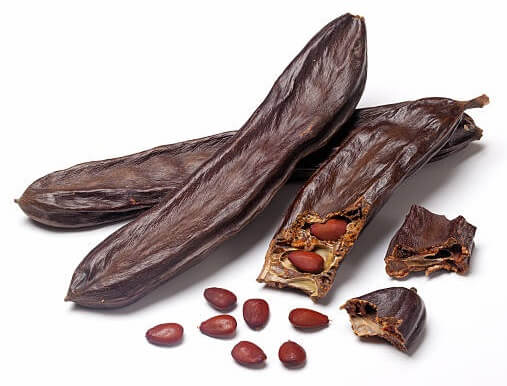
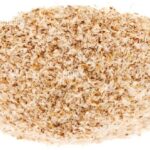
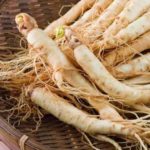
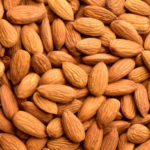
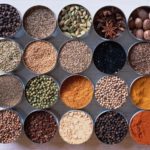
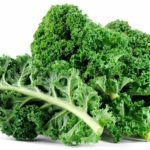
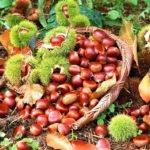
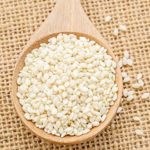





Leave a Reply